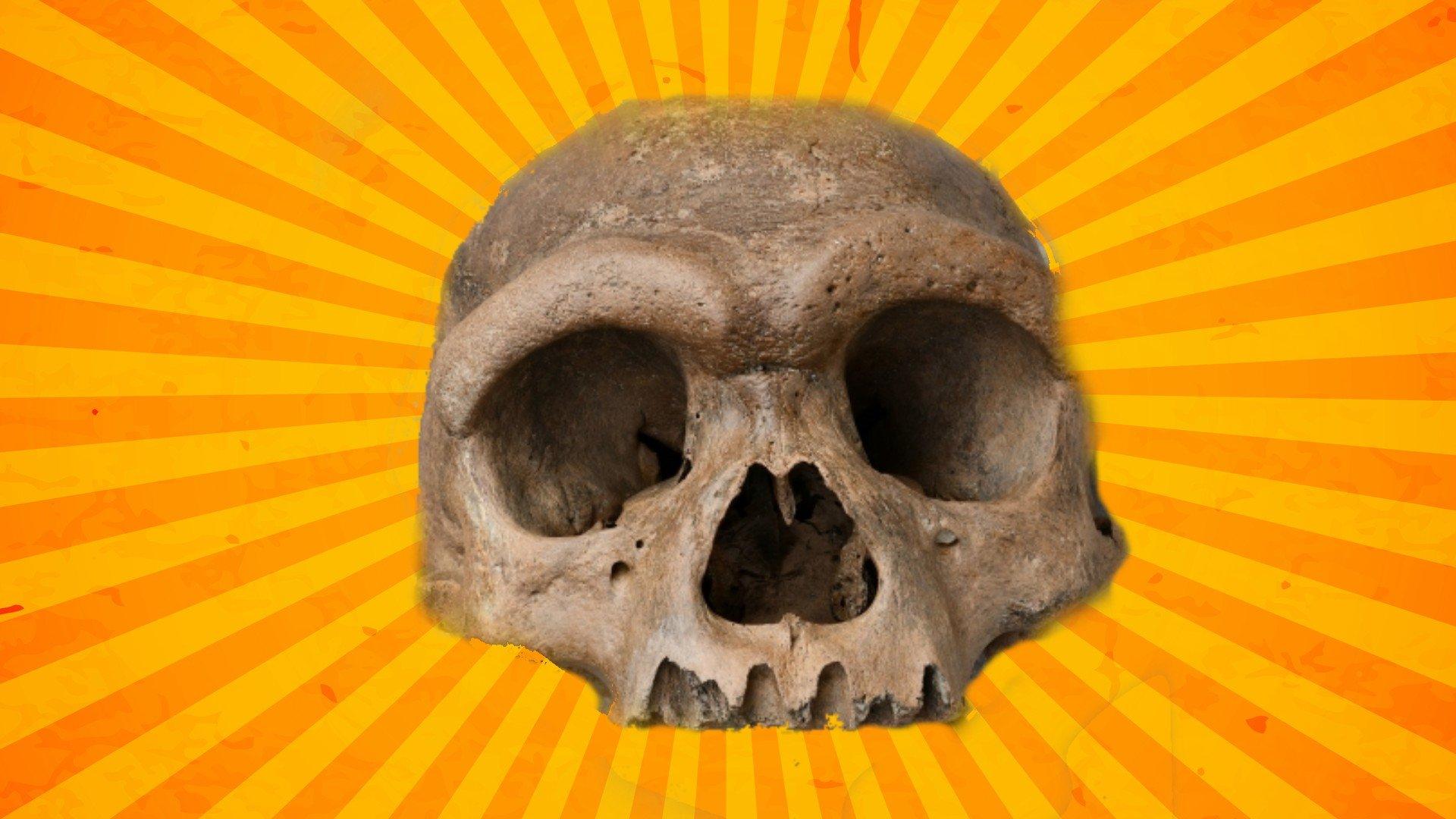Cassowary: Big dangerous bird was kept as pet by ancient humans
- Published
- comments
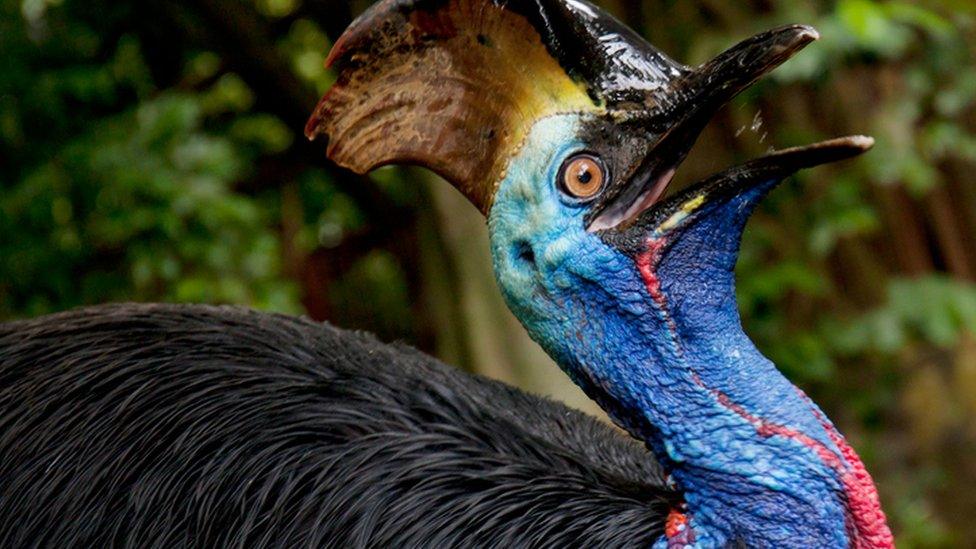
What came first - the chicken or the egg? Well actually, this strange looking animal was the first bird kept by humans thousands of years ago.
Called the cassowary, it's often described as the world's most dangerous bird because of its long, sharp toe. It still lives in areas of Papua New Guinea, Indonesia and Australia today.
The cassowary is big, territorial, aggressive and can't fly. Often compared to a dinosaur in looks, it's hardly the ideal candidate for a pet.
But, fossilized eggshells, found in two rock shelters in New Guinea, suggest that ancient humans may have collected the eggs of the cassowary before they hatched and then raised the chicks to adulthood.
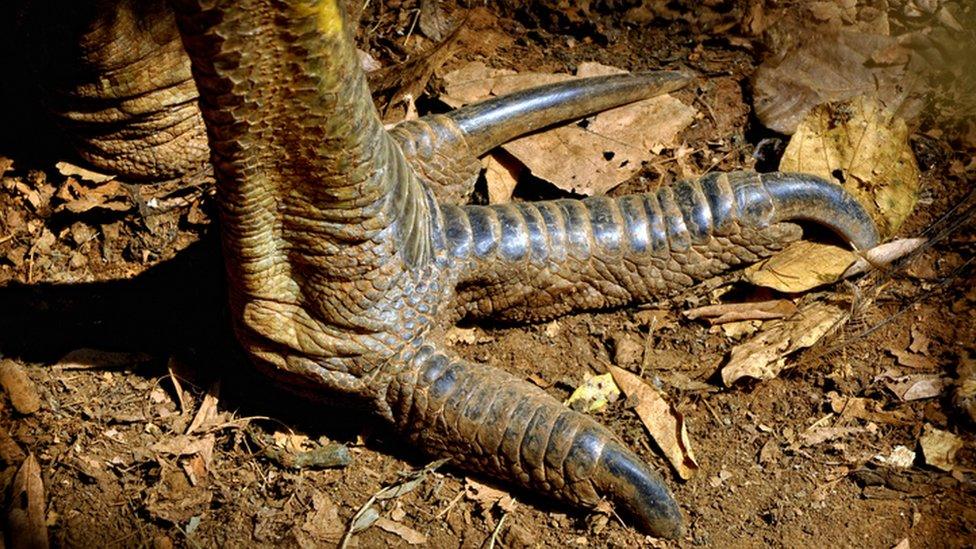
Cassowaries have long sharp toes
Lead author of the study, Kristina Douglass, from Penn State University in the US, says the discovery suggests cassowaries were kept by humans way before chickens.
"This behaviour that we are seeing is coming thousands of years before domestication of the chicken," she said.
Although the bird is known to be aggressive, it also "imprints" easily, meaning it becomes attached to the first thing it sees after hatching.
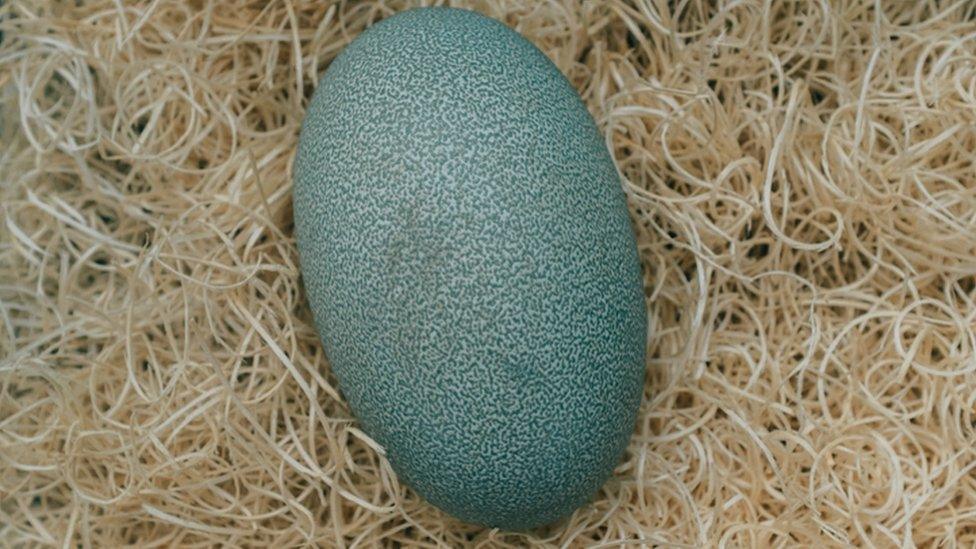
Cassowary eggs were kept until they hatched by ancient humans up to 18,000 years ago
There are three species of cassowary, and they are all native to parts of northern Queensland, Australia, and New Guinea. The most common, the southern cassowary, is the third-tallest and second-heaviest living bird, smaller only than the ostrich and emu. The other two species are the northern cassowary and the dwarf cassowary.
The researchers say ancient humans most likely kept the smallest species, the dwarf cassowary.
The fossilized eggshells were dated as part of the study, and their ages ranged from 18,000 to 6,000 years old.
Today in New Guinea, which is a large island north of Australia, the bird's meat is still considered a delicacy and its bones and feathers are used for ceremonial decoration on clothing.
- Published8 March 2018
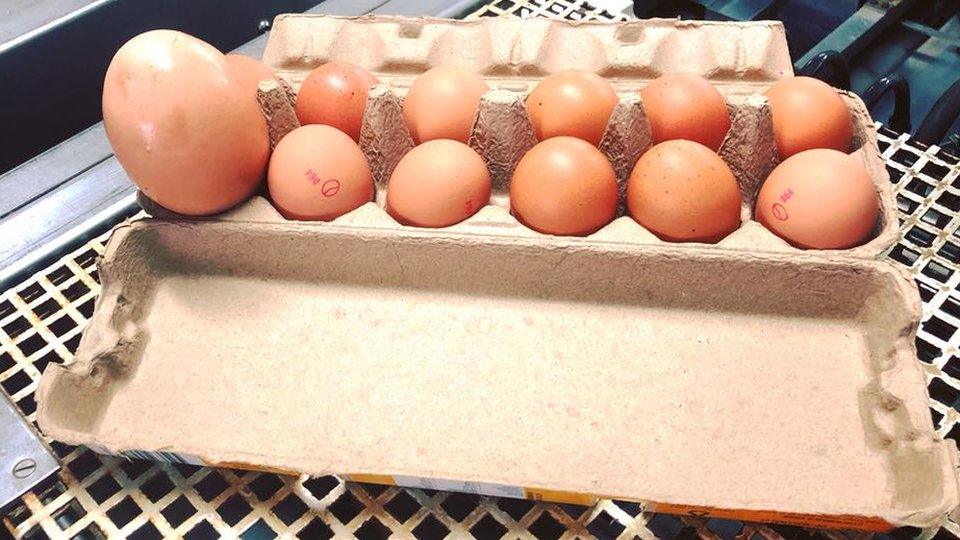
- Published26 June 2021
